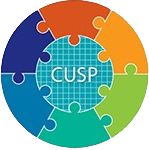Surgical Site Infections Reduced in African Hospitals That Adapted Strategy and Tools From AHRQ Project
Surgical site infections decreased about 60 percent and prevention measures improved in four African hospitals after researchers adapted strategies and tools from a U.S.-based AHRQ supported project to promote safe surgery. Surgical site infections are the most frequent healthcare-associated infection in low- and middle-income countries. The strategies, including interventions to improve teamwork and facilities’ patient safety culture, were used in about 4,300 surgeries performed in Kenya, Uganda, Zambia and Zimbabwe. The study, funded by AHRQ and the World Health Organization, was published March 5 in The Lancet Infectious Diseases. Access the abstract. AHRQ’s Toolkit To Promote Safe Surgery provides tools to help hospitals reduce surgical site infections and other complications.
Toolkit To Promote Safe Surgery

The Toolkit To Promote Safe Surgery helps perioperative and surgical units in hospitals identify opportunities to improve care and safety practices and implement evidence-based interventions to prevent surgical site infections. The toolkit has evidence-based, practical resources that reflect the real-world experiences of the frontline clinicians and subject matter experts who participated in the AHRQ Safety Program for Surgery, a national implementation project in which approximately 200 hospitals participated and successfully reduced surgical site infections. It builds on AHRQ’s Comprehensive Unit-based Safety Program (CUSP) and the core CUSP toolkit by providing specific tools focused on the surgical setting to help hospitals reduce surgical site infections and other complications.
This toolkit focuses on surgery in hospitals. For a toolkit that focuses on ambulatory surgery centers, access the AHRQ Toolkit To Improve Safety in Ambulatory Surgery Centers.
How To Use the Toolkit
The toolkit has two complementary guides that should be used together and are a good starting point: Applying CUSP To Promote Safe Surgery, and Surgical Complication Prevention. These two guides address respectively adaptive and technical work, which are both critical elements for improvement to occur. Technical work changes procedural aspects of care that can be explicitly defined, such as surgical skin preparation procedures. Adaptive work is designed to change the attitudes, values, beliefs, and behaviors of the people who deliver care and improve safety culture within an organization, thereby enabling consistent use of evidence-based practices. Both guides should be used simultaneously. Supplemental tools accompany the guides.
The toolkit also includes 15 instructional modules to help clinical teams address specific areas of competency. The modules are spread across the three phases that clinical teams will undergo as part of their quality improvement efforts: onboarding, implementation, and sustainability.
Toolkit Materials
The toolkit includes two guides, supplemental tools for each guide, and 15 instructional modules within three phases to support change at the unit level.
Guides
About the Toolkit Development
The toolkit was developed as part of the AHRQ Safety Program for Surgery, a national implementation project to reduce surgical site infections and other complications in hospitals. The 3-year project brought together subject matter experts and participating hospitals across the country. Approximately 200 hospitals and more than 370 perioperative teams participated in the project. Among the participating hospitals, implementation of the project was associated with a significant reduction in surgical site infections (relative reduction 25–40%, depending on type of procedure and surveillance system). Details are available in the Final Report. The toolkit was refined during the project and is made available for other facilities to use to reduce surgical complications.
Page last reviewed December 2017
Page originally created November 2017
Page originally created November 2017
Internet Citation: Toolkit To Promote Safe Surgery. Content last reviewed December 2017. Agency for Healthcare Research and Quality, Rockville, MD. http://www.ahrq.gov/professionals/quality-patient-safety/hais/tools/surgery/index.html





















.png)









No hay comentarios:
Publicar un comentario